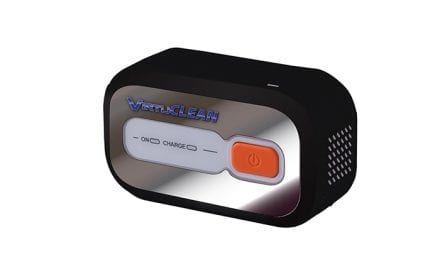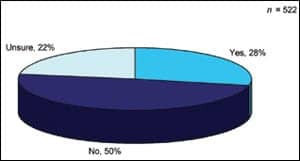Airflow sensors are used during sleep studies to measure and monitor the flow of breathing to help clinicians detect sleep-disordered breathing. They use various technologies, such as pressure transducers and polyvinylidene fluoride, to detect inhalation and exhalation. Airflow sensors are available in disposable and reusable options. Sleep Review‘s airflow sensor guide is a comparison of the major medical sensors available on the sleep market.
| Company | BRAEBON Medical Corp | Cadwell Industries Inc | Dymedix Diagnostics | Dymedix Diagnostics | SleepSense |
|---|---|---|---|---|---|
| Sensor: | ValueLine Pressure Sensor | Sleepmate Airflow Pressure Transducer + Cannula | Lullaby Pediatric Airflow Sensors | TriplePlay Airflow Sensors | ThermoCan System |
| Website: | www.braebon.com | www.cadwell.com/sleepmate | www.dymedix.com/lullaby-pediatrics | www.dymedix.com/ tripleplay-airflow-sensors | www.sleepsense.com |
| Description: | The ValueLine Pressure Sensor has a small footprint and plugs into your AC headbox using two pairs of touchproof 1.5 mm safety connectors. The internal piezo pressure sensor does not require batteries. | Sleepmate Airflow Pressure Transducers are a small single channel sensor. The reusable transducer couple with disposable cannulae with or without filters. | Dymedix pediatric airflow sensors provide enhanced sensitivity through PVDF technology. They are designed for use with Dymedix iFM, a specialized airflow interface cable that boosts and filters airflow waveforms allowing for more accurate and detailed sensing of airflow activity from neonate and infant patients. | Dymedix TriplePlay Airflow Sensors detect three types of sleep-disordered breathing events with only one sensor: apnea, hypopnea, and snore. The TriplePlay PVDF technology responds to changes in both pressure and temperature resulting in accurate detection of apnea, hypopnea, UARS, and snore, all with one sensor. | The SleepSense ThermoCan monitors oral/nasal thermal airflow and nasal pressure simultaneously. Disposable ThermoCan Cannulas are designed with a built-in thermal airflow sensor. ThermoCan Interface Cables have 2 gold pins that insert into the sides of ThermoCan Cannulas at the nares, transmitting the thermal airflow signal to the system and replacing the need for thermistor |
| Reusable: | Reusable | Reusable | Reusable and Disposable | Reusable and Disposable | Disposable cannula, Reusable cable |
| Patient Age Range: | pediatric, adult | infant, pediatric, adult | infant, pediatric | infant, pediatric, adult | infant, pediatric, adult |
| Technology: | Pressure transducer | Pressure transducer | PVDF | PVDF | Pressure cannula and thermal airflow sensors |
| Made of: | Plastic casing with Luer-lock connector | Plastic casing with Luer-lock connector | Polyvinylidene fluoride (PVDF) | Polyvinylidene fluoride (PVDF) | [Not provided] |
| Size Options: | One size fits all | One size fits all | Neonate, infant, pediatric | S, M, L – neonate, infant, pediatric | Child small, child, adult |
| Application: | Standard cannula placement under the nose | Standard cannula placement | Standard application | Optional adhesive backing | Designed similar to a regular pressure monitoring cannula and are applied to the patient in the same way. |
| Warranty (months): | 6 | 9 | N/A (disposable sensor); 12 (reusable cable) | 12 (reusable version) | 12 (reusable cable) |
| Sample Requests: | N/A | N/A | www.dymedix.com/support | www.dymedix.com/support | [email protected] |
Information for this guide is based on data submitted by sensor marketers. Sleep Review strives for accuracy in all data but cannot be held responsible for claims made by marketers. All airflow sensor marketers get one listing at no charge. Advertisers are offered multiple listings. All sensors may not be included. We plan to update this guide once a year. Email editor[at]sleepreviewmag.com to be considered for the next update.





